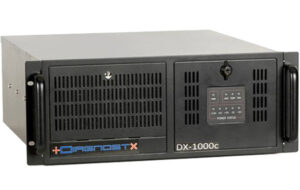The Pikes Peak Regional Communications Network counts on DiagnostX radio technology to cut costs and improve communications.
In today‘s tough economic climate, cutbacks in funding are forcing governmental agencies and public safety departments to find ways to do more with less. In Colorado Springs, the Pikes Peak Regional Communications Network(PPRC) has come up with an innovative solution to cut the cost of servicing the 5500 mobile and trunked radios in the system and, at the same time, improve radio service.
The PPRC has signed on to become one of the first public agencies in the nation to utilize DiagnostX, a unique radio technology that detects problem radios over-the-air, 24 hours a day, 7 days a week without re-calling radios into the shop for inspection.
This one-of-a-kind technology verifies and analyzes the health and performance of a radio on its respective network by capturing the radio’s waveform off the airwaves. In a nutshell, DiagnostX performs like an over-the-air bench technician. It detects and is constantly monitoring radios for operational readiness and diagnosing problems before they become evident.
In the past, the only way to determine if radios were working properly was to schedule the radio subscriber to bring them in for servicing. Since it’s estimated that 75% to 80% of the radios brought in for service don’t require repair, this maintenance model is both costly and unnecessarily time-consuming. Plus, it takes radios and personnel out of the field where they are needed.
Dan Gorton, System Manager for the Pikes Peak Regional Communications Network and Randy Bell, Manager of the Department of Information Technology Communications for the City of Colorado Springs, quickly recognized the benefits offered by DiagnostX and collaborated to obtain this new technology.
With more than 120 agencies and thousands of radios on the PPRC network, Gorton is enthused about DiagnostX’s ability to improve the quality of communication between radio subscribers and dispatch. Often, he says, squawking or poor reception are blamed on dispatch, the network or terrain when, in fact, the user’s radio is out of calibration.
Using DiagnostX, PPRC is now able to determine whether a radio is working, “sick” or potentially troublesome. Gorton uses the reports generated to notify individuals, groups or agencies that they have radios that are failing or in danger of failing. Now, he says, subscribers have the information they need to ensure better communication between users in the field and dispatch.
As the manager of the department tasked with servicing all of the radios on the PPRC network, Bell says that saving time and money were key factors in his choice of DiagnostX.
Servicing all the radios in the PPRC system is an immensely time-consuming process, he explains. Bell estimates that it would take two people three months out of every year to go out to every agency and check every radio. When you add to that the inconvenience of asking every user to bring radios into a location for service, then you’re taking people and radios out of the field where they are needed, he adds.
Colorado Springs isn’t the only government agency to discover how DiagnostX technology can be a tool for managing communications budgets and personnel while maintaining a high level of service, says, Joseph Rey, Managing Partner of Locus Location Systems which has applied for the patent for DiagnostX technology.
“As we have talked to public safety communications personnel, they have all been eager for more information. Every communications organization quickly recognizes that this is a big solution to an expensive problem. It’s a huge step forward and very exciting,” he adds.
Current DiagnostX users include Pikes Peak Regional Communications Network; Collier County, Florida; Metropolitan Emergency Communications Agency, Indianapolis/Marion County, Indiana; the Town of Colonie Police Department, Latham, New York, and Cobb County Department of Public Safety, Marietta, Georgia.
Locus Location Systems is an industry leader in applying TDOA technology in innovative ways to protect law enforcement officers, public safety and public service personnel. Locus’ products include DiagnostX, SafePoint Radio Location System, TrackerX and TrackerXTractor.
Products are available through Locus Location Systems, West Melbourne, FL and 3Eye Technologies, Battle Creek, MI.




